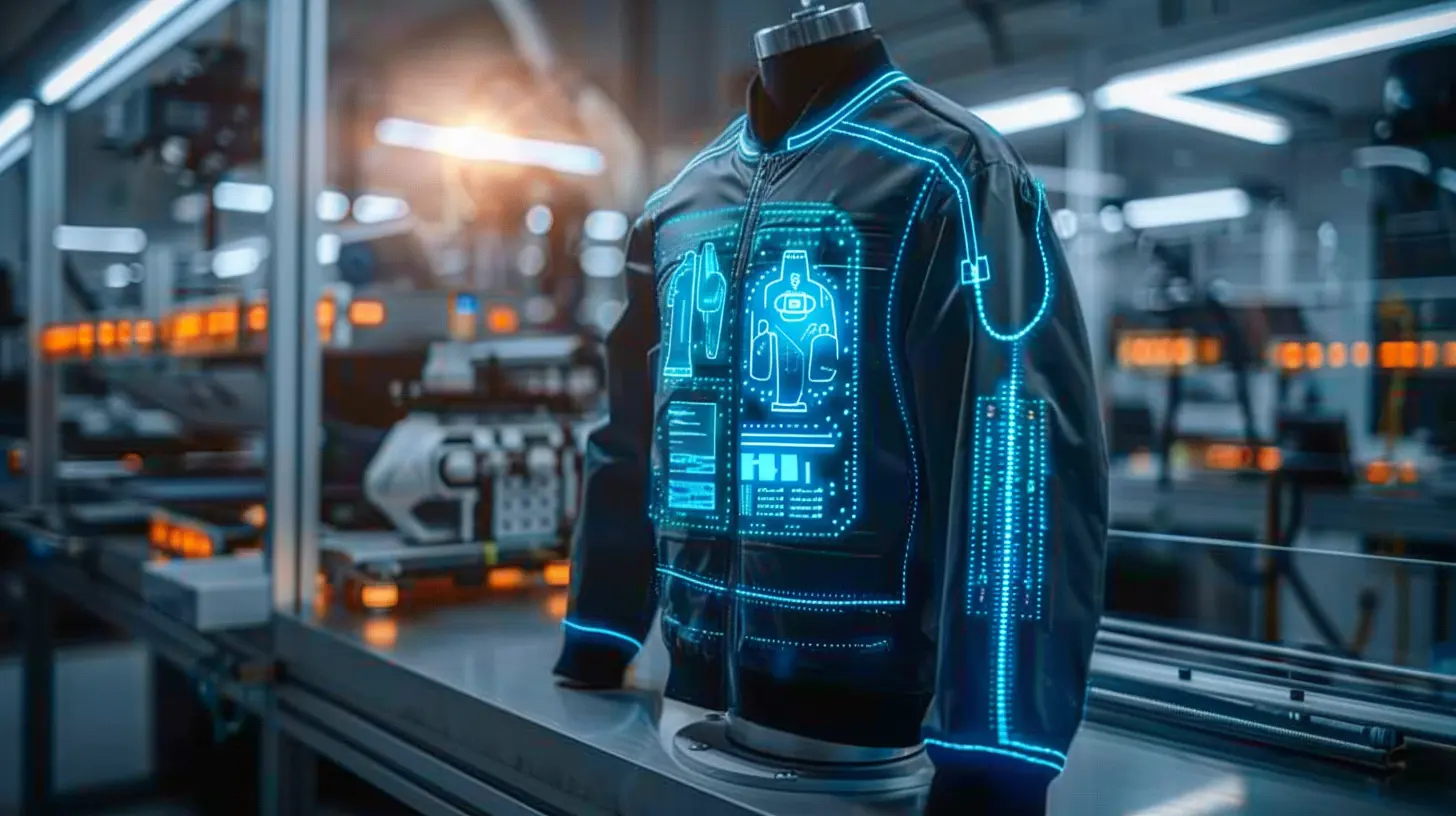The Role of Smart Fabrics in the Wearable Tech Ecosystem
8 June 2025
Welcome to the future—where your clothes aren't just making fashion statements, they’re making smart decisions. Smart fabrics, or electronic textiles (e-textiles), are revolutionizing the way we think about wearable technology. No, this isn’t sci-fi. We’re way past that. These fabrics are blending fibers with function, textiles with tech, and fashion with futuristic features. Let’s unravel this trend and see how smart fabrics are weaving themselves into the heart of the wearable tech ecosystem.
What Are Smart Fabrics, Anyway?
Alright, let’s start with the basics. Imagine a piece of clothing that can monitor your heart rate, adjust its temperature based on the weather, or even charge your phone. Sounds wild, right? That’s what smart fabrics are all about.They’re textiles embedded with technology—think sensors, actuators, and conductive threads—that allow them to interact with the environment or the user. They can collect data, respond to stimuli, and even communicate with other devices. It’s like giving your clothes a brain.
There are two main types:
1. Passive Smart Fabrics – They can sense the environment (like body temperature or light), but can’t react to it.
2. Active Smart Fabrics – These not only sense, but also respond—like heating up when it’s cold or tightening when you’re exercising.
And then we’ve got the ultra-smart ones that can adapt, evolve, and even store data. Yeah, the future is literally dressing us.
The Evolution: From Fitness Trackers to Fabric-Based Wearables
Let’s be honest—wearable tech used to mean bulky wristbands and awkward headsets. But that’s changing fast. Smart fabrics are shifting wearable technology from gadgets you carry to gear you wear effortlessly.Fitness trackers? Imagine replacing them with a T-shirt that measures your heart rate, calories burned, and hydration levels. Sound better? That’s exactly the kind of seamless, unobtrusive experience smart fabrics are gunning for.
Athletes, for example, are already rocking gear made of smart fabric that offers real-time performance stats. You don’t need a device on your wrist when your jersey is doing all the tracking.
Why Smart Fabrics Matter in the Wearable Ecosystem
So, what makes smart fabrics such a big deal in the wearable tech scene? It’s simple—they offer what other wearables can’t: natural integration without the bulk.Here’s why that matters:
1. Comfort and Aesthetics
Let’s face it: comfort is king. And if it doesn’t look good, you won’t wear it. Smart fabrics blend tech with textile, allowing for sleek, stylish designs that look just like regular clothes.2. Functionality at Every Thread
These fabrics can do more than just monitor—they can notify, react, and even change. For example, a smart jacket can illuminate when cycling at night or change color with air pollution levels.3. Data Collection in Real Time
We’re talking about 24/7, body-close, real-time data gathering. Whether it’s for medical purposes, athletic performance, or everyday wellness, smart fabrics offer a deeper, more accurate picture of our physical state.4. Power Efficiency
With energy harvesting capabilities (like solar absorbing textiles), these fabrics can power themselves, eliminating the need for external batteries in some cases. No more charging your shoes? Count me in.
Real-World Applications of Smart Fabrics
This isn’t just hype. Smart fabrics are already out there doing some serious work. Let’s look at where they’re making waves:Healthcare
This is probably the most promising frontier. Smart fabrics are being used in patient monitoring, providing continuous tracking of heart rate, respiration, and even glucose levels.Think about garments that can alert caregivers when a patient is in distress—without needing to be in a hospital. It’s remote healthcare on a whole new level.
Sports & Fitness
Athletic gear embedded with sensors is helping athletes monitor performance, avoid injuries, and recover faster. From smart socks that track running technique to shirts that monitor muscle activity—it’s performance analytics like never before.Military & Defense
Soldiers wear gear that monitors fatigue, hydration, and even exposure to harmful gases. Smart textiles here mean better safety, enhanced performance, and real-time situational awareness.Fashion & Lifestyle
We’ve got designers embedding LEDs into gowns, jackets that play music, and even garments that react to your mood. The line between art and tech is officially blurred.Safety & Emergency Services
Firefighters are suiting up with smart uniforms that monitor exposure to heat and toxic gases. These suits can send alerts before things get dangerous—helping save lives.The Tech Behind the Thread
Now, let’s lift the hood and look at what’s powering smart fabrics. It’s a mix of sensors, conductive yarns, and microcontrollers—all miniaturized and embedded into textile fibers.Some key components include:
- Conductive Threads: Woven directly into the fabric to carry electricity and data.
- Embedded Sensors: Measure biometric data like ECG, motion, sweat composition.
- Microcontrollers: Tiny processors that interpret data and communicate with other devices.
- Actuators: Elements that cause a reaction (like vibration, heat, or color change).
- Wireless Modules: Bluetooth or Wi-Fi for real-time syncing with phones or cloud platforms.
It’s all stitched together quite literally, turning your everyday T-shirt into a tech powerhouse.
Challenges on the Road Ahead
Of course, it’s not all smooth stitching. Smart fabrics are still dealing with a few bumps:Durability
You’re wearing these fabrics daily—washing, stretching, sweating in them. Making tech that’s light, durable, and washable is tough.Power Supply
Even with tiny batteries or energy-harvesting tech, power is still a limiting factor. Nobody wants to charge their pants.Cost
These materials aren’t cheap. For mass adoption, they need to be cost-effective and scalable.Data Security
When your shirt knows your heart rate, stress level, and location—that’s sensitive data. Privacy and encryption are critical.The Future of Smart Fabrics Is Closer Than You Think
Now here’s where things get exciting. We’re just scratching the surface. The smart apparel industry is projected to explode over the next few years—and not just in niche markets.Some trends that could dominate:
- Biometric Authentication: Clothes that unlock your phone or bank account using your unique body metrics.
- Customized Health Plans: Garments that give tailored suggestions based on your data—like telling you when to hydrate or take a break.
- Responsive Fashion: Outfits that shift shape or color depending on weather, mood, or setting.
And let’s not forget the potential in augmented reality wearables, where your smart clothing could project data, maps, or alerts right into your AR glasses.
We’re heading toward a truly connected wardrobe, where what you wear becomes a part of your digital identity.
So, Where Do We Go From Here?
Smart fabrics are the secret weapon in the evolution of wearable tech. They’re turning passive accessories into active participants in health, wellness, performance, and style.We’re moving from a world of holding tech to wearing it. From fitness watches to wellness socks. From smartwatches to smart bras. The potential is massive.
As tech continues to shrink and fabrics get smarter, expect this space to boom. Whether you're a tech nerd, fashion enthusiast, or health guru — smart fabrics are something worth watching.
Your clothes aren’t just dressing you anymore. They’re talking to you, supporting you, and syncing with your world. And honestly, that’s just plain awesome.
all images in this post were generated using AI tools
Category:
Technology InnovationAuthor:

Adeline Taylor
Discussion
rate this article
3 comments
Denise Wade
This article highlights the transformative potential of smart fabrics in wearable tech. It's fascinating how these materials can enhance functionality and comfort, paving the way for innovative applications in everyday life.
June 22, 2025 at 12:22 PM

Adeline Taylor
Thank you for your insightful comment! I'm glad you found the potential of smart fabrics fascinating—they truly are revolutionizing wearable tech.
Etta Parker
Exciting innovations ahead! Smart fabrics are game-changers!
June 11, 2025 at 4:02 AM

Adeline Taylor
Thank you! We're thrilled about the potential of smart fabrics to transform wearable technology. Stay tuned for more exciting developments!
Kristy McGill
Smart fabrics enhance wearables, bridging functionality and user experience.
June 10, 2025 at 3:11 AM

Adeline Taylor
Thank you! Smart fabrics truly do play a crucial role in enhancing both the functionality and user experience of wearable technology.



